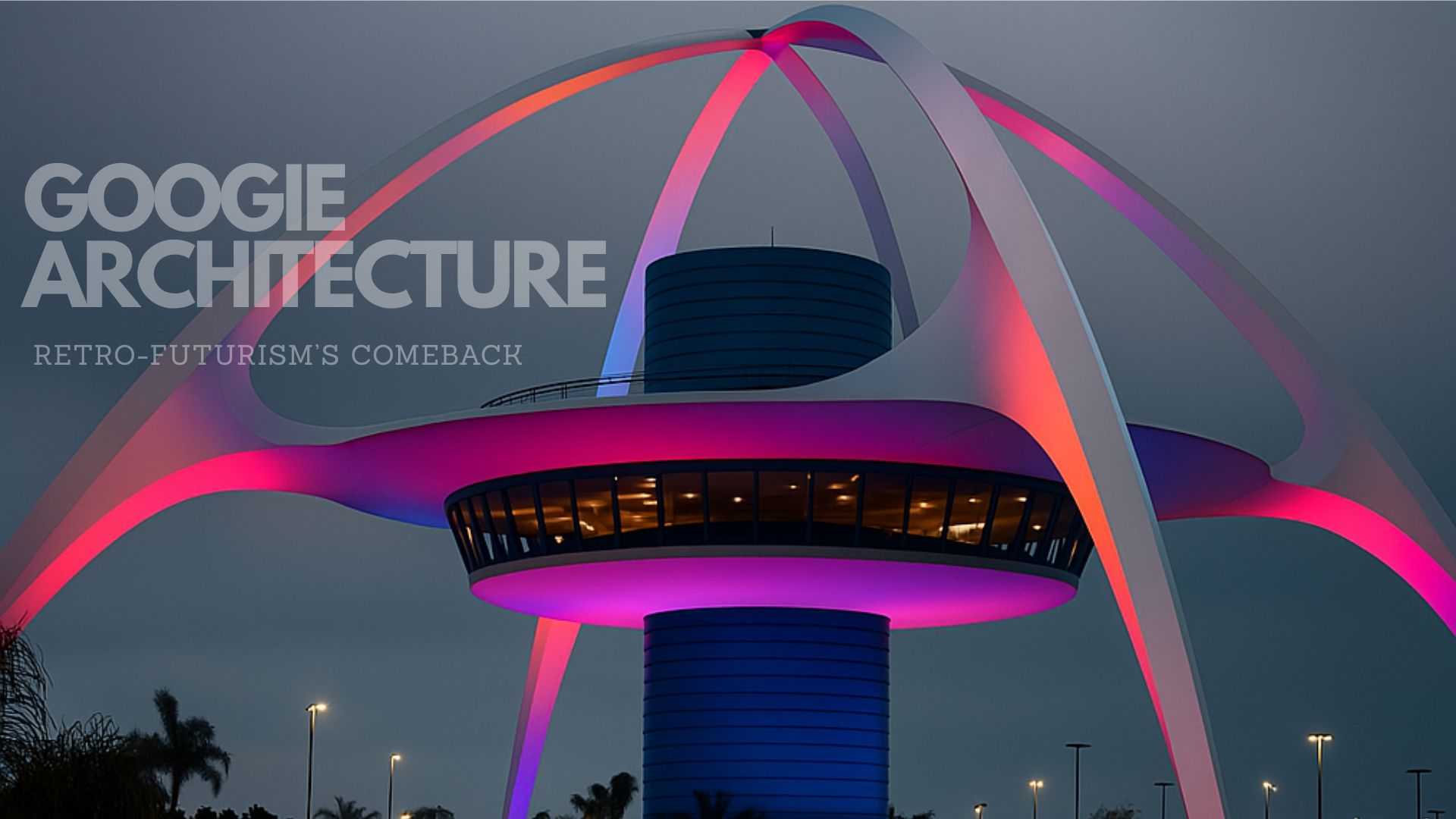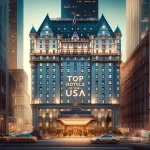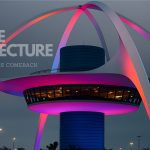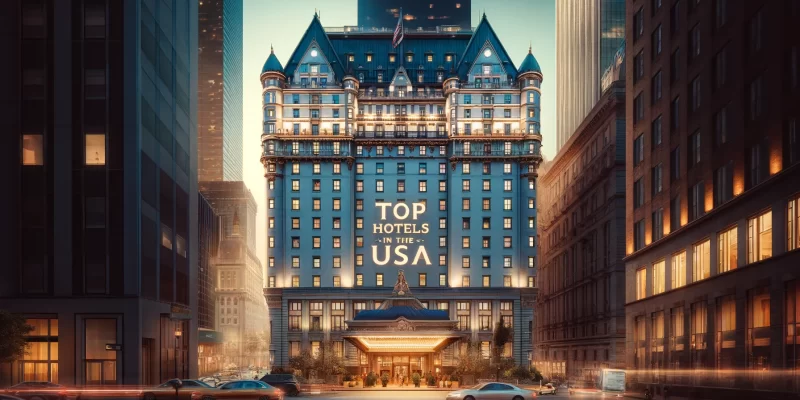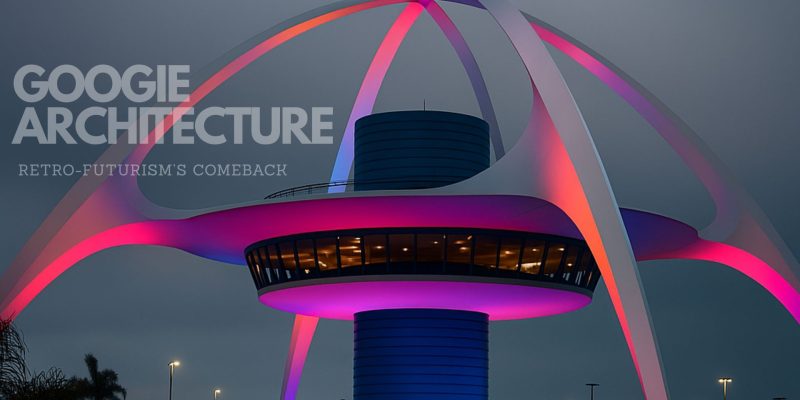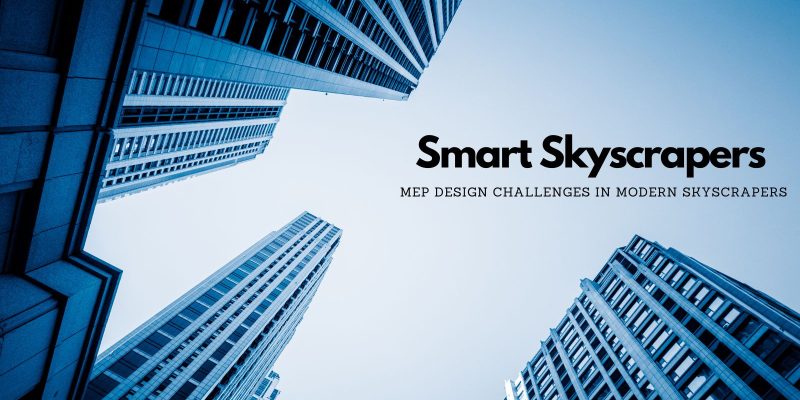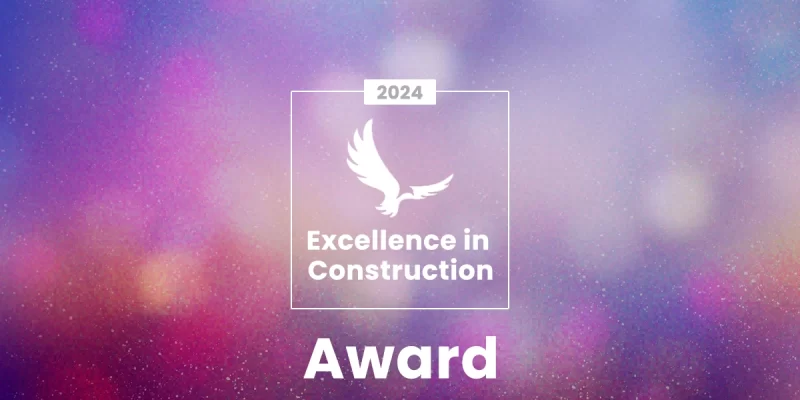Table of Contents
In the mid-20th century, as America embraced the optimism of the post-war era and the thrill of the Space Age, a new architectural style emerged that captured the zeitgeist of progress and futurism. Googie architecture, with its gravity-defying angles, neon accents, and embrace of technology, became a visual anthem for a society hurtling toward the future. This blog explores Googie architecture in depth, its connection to broader futuristic architecture movements, and its relevance for today’s construction professionals, realtors, and homeowners.
The Origins and Essence of Googie Architecture
Googie architecture first appeared in Southern California during the late 1940s and peaked in the 1950s and 1960s. Its name derives from Googie’s Coffee Shop, a now-demolished Los Angeles diner designed by architect John Lautner in 1949. The term was later popularized by a House and Home magazine article that used “Googie” to describe this playful, futuristic style.
Born from the intersection of car culture, atomic age fascination, and space exploration, Googie was inherently commercial. It aimed to attract passing motorists with eye-catching designs, making it a staple of diners, gas stations, motels, and signage.
Key characteristics include:
• Dynamic Forms: Upswept roofs resembling rocket fins, cantilevered canopies, and parabolic arches that evoke motion.
• Bold Materials: Glass walls, steel beams, and starburst details symbolizing atomic energy.
• Futuristic Motifs: Starbursts, boomerangs, and flying saucer shapes inspired by space travel.
• Vibrant Signage: Neon lights and exaggerated lettering to grab attention from highways.
Iconic examples include the Space Needle in Seattle, the Theme Building at LAX, and Norm’s Restaurants in Los Angeles. These structures embodied the era’s belief in a techno-utopian future.
Iconic Examples of Googie Architecture
Here are 10 iconic examples of Googie architecture, celebrated for their futuristic designs and cultural significance:
1. Pann’s Restaurant (Los Angeles, CA)
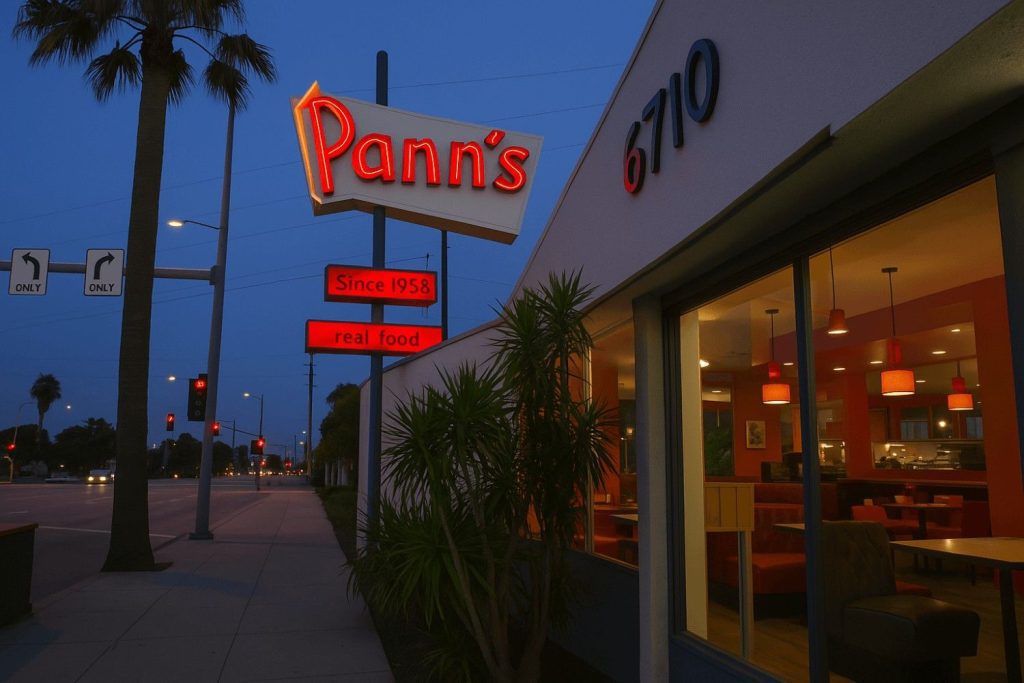
A spaceship-like structure at Los Angeles International Airport, designed in 1961 with intersecting parabolic arches and stucco-clad steel. It originally housed a rotating restaurant and remains a retro-futuristic landmark.
2. Space Needle (Seattle, WA)
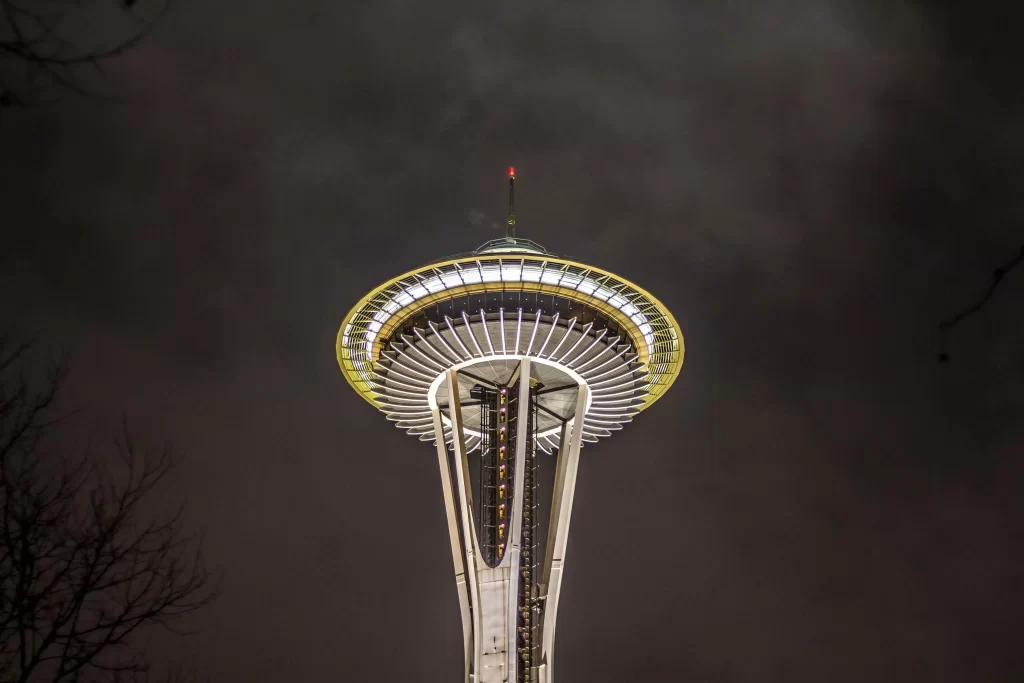
Built for the 1962 World’s Fair, this 184-meter tower features a flying saucer-shaped observation deck. Though not strictly Googie, its Space Age aesthetics and cantilevered design align with the style.
3. Oldest Surviving McDonald’s (Downey, CA)
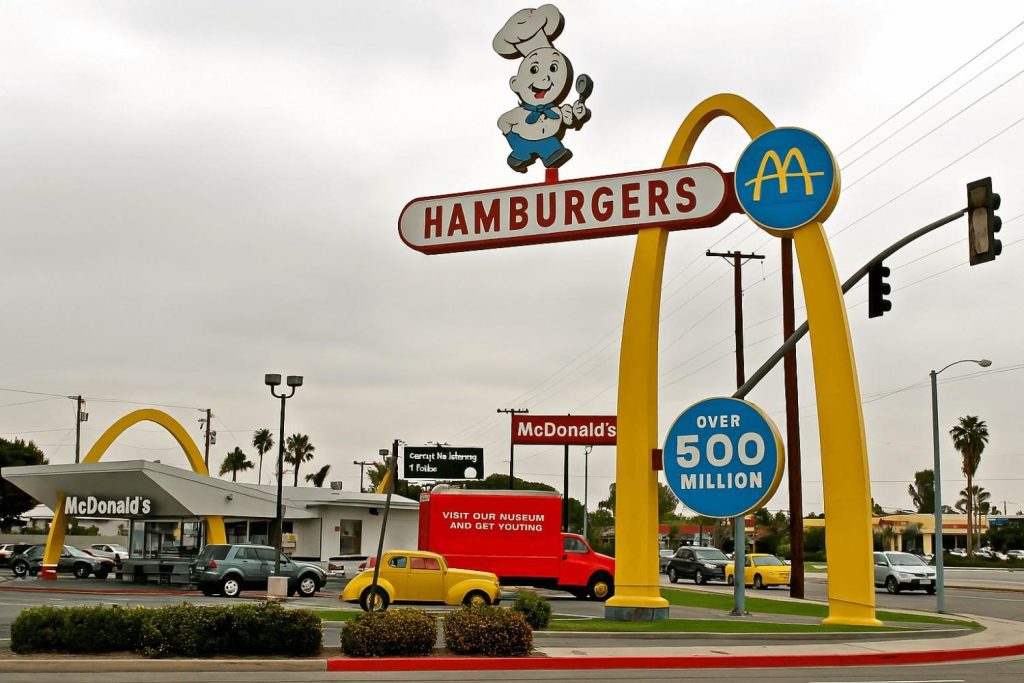
Opened in 1953, this drive-in boasts 30-foot golden arches and glass walls, designed by Stanley Clark Meston. It’s a preserved example of Googie’s commercial appeal.
4. TWA Flight Center (Queens, NY)
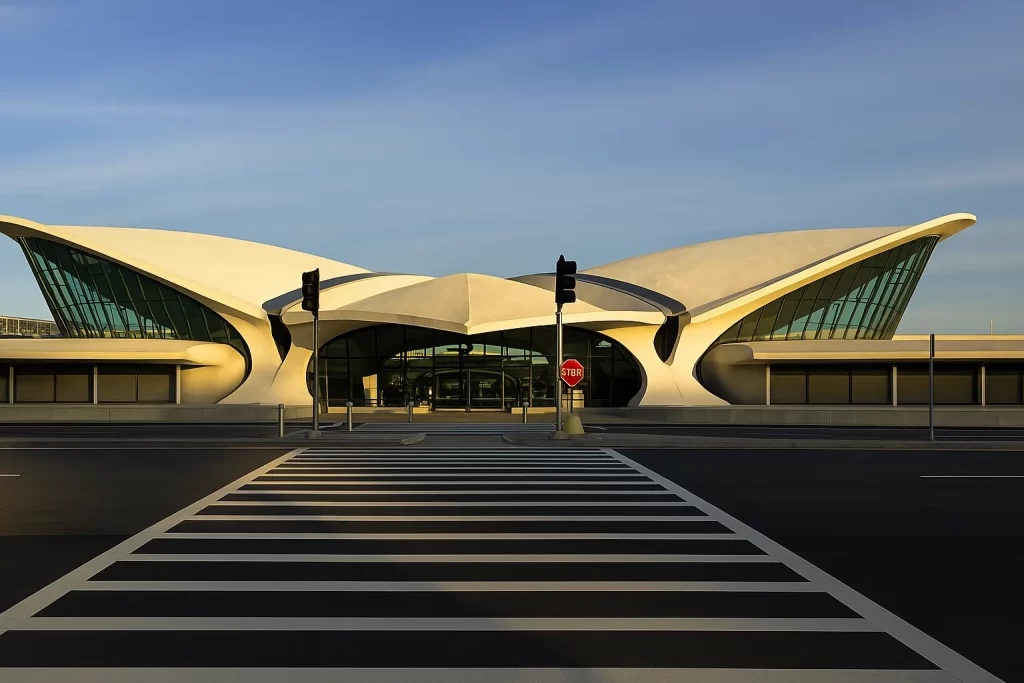
Eero Saarinen’s 1962 terminal at JFK Airport mimics a bird in flight with sweeping concrete wings. Converted into the TWA Hotel in 2019, it retains its Googie-inspired curves.
5. Bob’s Big Boy (Burbank, CA)
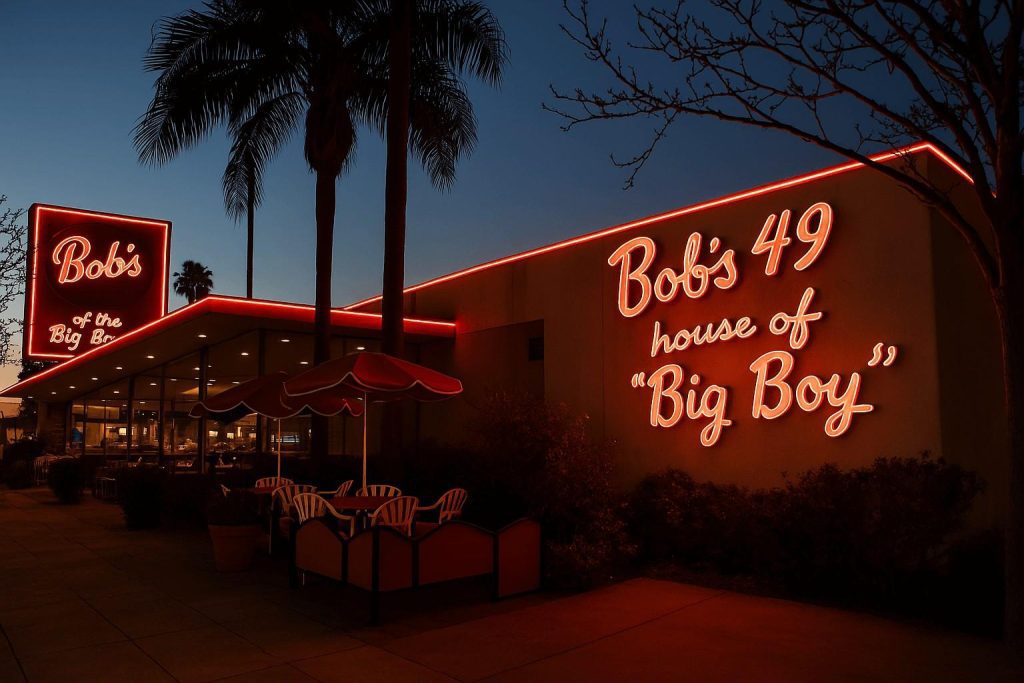
Designed by Wayne McAllister in 1949, this diner features a boomerang-shaped roof and neon signage. It’s considered a prototype of Googie and still operates today.
Googie and the Broader Landscape of Futuristic Architecture Styles
Googie is often categorized under futurist architecture, a movement emphasizing innovation, technological progress, and forward-thinking design. While futurist architecture encompasses many styles, Googie stands out for its populist, commercial roots. Here’s how it fits into the larger picture:
1. Futurist Architecture of the Mid-20th Century:
Post-WWII futurism celebrated humanity’s potential through advancements in engineering and materials. Architects like Eero Saarinen (TWA Terminal) and Oscar Niemeyer (Brasília) embraced sweeping curves and minimalist forms, paralleling Googie’s optimism but with a more institutional polish.
2. Neo-Futurist Architecture:
Emerging in the late 20th century, neo-futurism combines sustainability with digital design tools. Architects like Zaha Hadid and Santiago Calatrava use fluid, organic forms made possible by CAD software. While Googie’s aesthetic is more “retro-futuristic,” its spirit of experimentation lives on in neo-futurism’s bold geometries.
3. Futuristic Brutalist Architecture:
Brutalism, characterized by raw concrete and monolithic forms, seems antithetical to Googie’s whimsy. However, some contemporary designs blend Brutalism’s materiality with futuristic elements—think angular concrete structures with space-age cantilevers.
While not directly related to Googie, this hybrid style reflects how futurism continually evolves.
The Decline and Revival of Googie
By the 1970s, Googie fell out of favor. Critics dismissed it as kitsch, associating it with commercial excess. The oil crisis and environmental concerns shifted priorities toward austerity, leading to the rise of Brutalism and postmodernism. Many Googie landmarks were demolished, seen as relics of a naive era.
However, the 21st century has sparked renewed interest. Preservationists now recognize Googie as a cultural artifact of mid-century optimism. Cities like Palm Springs and Los Angeles protect Googie structures, while designers draw inspiration from its playful forms for retro-futuristic cafes, hotels, and homes.
Practical Insights for Incorporating Googie Elements
• Material Challenges: Restoring Googie buildings often requires replicating period-specific materials like terrazzo floors, neon tubing, and steel-reinforced concrete.
• Structural Innovation: Cantilevered roofs and thin-shell concrete domes (seen in Lautner’s Chemosphere House) demand expertise in mid-century engineering techniques.
• Modern Adaptations: Incorporate Googie elements (e.g., angular canopies, glass walls) into contemporary projects using durable materials like powder-coated steel or energy-efficient glazing.
• Historical Value: Highlight Googie’s cultural significance to attract buyers interested in mid-century modern or retro aesthetics.
• Marketability: Emphasize unique features like original neon signs or atomic-age detailing as selling points.
• Zoning and Preservation: Stay informed about local heritage laws; some Googie structures may qualify for tax incentives as historic landmarks.
• Preservation Tips: Retain original features (e.g., boomerang-shaped counters, sunburst screens) while updating electrical and plumbing systems.
• Modernizing Googie: Pair vintage elements with smart home technology or solar panels for a blend of nostalgia and sustainability.
• DIY Inspiration: Use starburst wall art, geometric tile patterns, or neon lighting to evoke Googie’s vibe in renovations.
The Legacy and Future of Googie
Googie architecture remains a testament to a time when the future seemed limitless. Its influence permeates pop culture—from The Jetsons to Fallout video games—proving its enduring appeal. Today, as society grapples with rapid technological change, Googie’s boldness offers a reminder to embrace innovation with optimism.
For architects and homeowners alike, Googie challenges us to think beyond convention. Whether restoring a historic diner or designing a neo-futurist home, its legacy encourages creativity, joy, and a belief that architecture can inspire wonder.
At Russell and Dawson, we bring decades of experience across every architectural style from timeless classics to bold, futuristic visions like Googie design. Whether you’re restoring a mid-century gem or building something cutting-edge, our multidisciplinary team is equipped to deliver with precision and creativity.
Visit https://www.rdaep.com/ learn more about our design capabilities.
